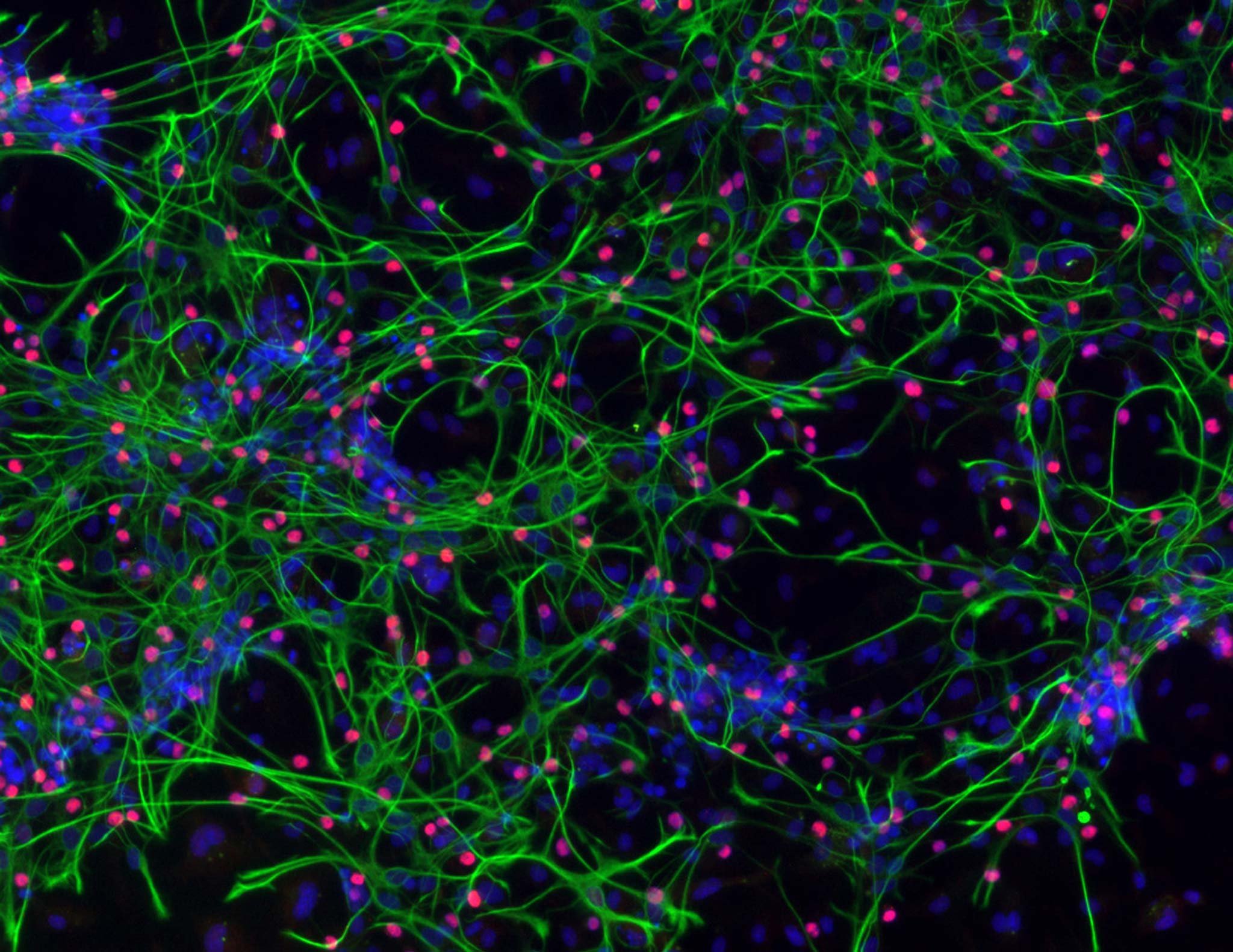
RESEARCH
Enlarged head size is common amongst individuals with the most severe forms of autism spectrum disorder (ASD). Deletion of a small portion of chromosome 16, specifically 16p11.2, is strongly associated with this ASD phenotype. We use stem cells from individuals with 16p11.2 deletion syndrome to investigate mechanisms that may contribute to brain overgrowth.
During development, neurons grow and develop, making connections to one another and establish their final locations in the brain. In typical neurodevelopment, unhealthy neurons are “eaten,” or, eliminated, by the immune cells of the brain - microglia.
Brain overgrowth in autism
In individuals with 16p11.2 deletion syndrome, CD47, a neuronal “don’t eat me” signaling protein, was found to be over-expressed. Therefore, in cases of severe ASD with enlarged head size further characterized by this chromosomal abnormality, unhealthy neurons are eliminated at lower rates.
Experimentation blocking CD47, “don’t eat me,” demonstrated restoration of this elimination process, suggesting that targeting this CD47 pathway may be helpful in identifying treatments for psychiatric disorders associated with brain overgrowth.
The Chetty Lab is focused on neurodevelopmental and psychiatric disorders.
We aim to develop meaningful preclinical disease models in human pluripotent stem cell systems (iPSC) to characterize subtypes of these heterogeneous disorders and illuminate opportunities for therapeutic intervention.
Current projects hone in on the cell and molecular mechanisms contributing to brain overgrowth, such as why unhealthy brain cells are not properly eliminated during development in ASD and similar disorders. Our multi-modal approach emphasizes single-cell RNA-sequencing in iPSC-derived cerebral organoids and functional assays in vivo - integrated with patient-specific neuroimaging, cognitive, and clinical data.
